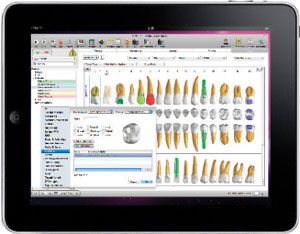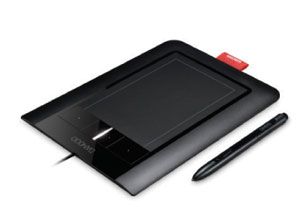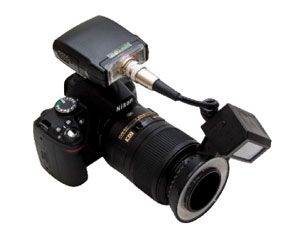Consumer technologies
3D Video A new dimension to visual presentations Last January, the annual Consumer Electronics Show in Las Vegas turned into a giant coming out party for 3D television. Coming on the heals of the massive theatrical success of the 3D movie Avatar and with the commercial launch of 3D Blu-Ray players, it’s clear 3D viewing is a big part of the future of video.
3D Video
A new dimension to visual presentations

Last January, the annual Consumer Electronics Show in Las Vegas turned into a giant coming out party for 3D television. Coming on the heals of the massive theatrical success of the 3D movie Avatar and with the commercial launch of 3D Blu-Ray players, it’s clear 3D viewing is a big part of the future of video.
Of course, working in three-dimensions is nothing new for the dental industry. 3D cone beam imaging and 3D treatment planning are growing more common as clinical tools, but 3D video can offer even more when it comes to patient education and entertainment, not to mention allowing clinicians the prospect of interacting with three-dimensional patient data in a virtual environment.
“3D is a great way to get the point across, but even more so will set the practice apart by demonstrating a technology that few have even yet experienced. Providing this in an environment where the patients can watch 3D computer-generated dental education drives home the point that the practice is committed to state of the art in all aspects,” DPR Technology Editor Dr. John Flucke said.
Currently, commercialized 3D video technologies require viewers to wear special glasses that can intrude on the experience, but glasses-free 3D is not too far off. Similar to the way HD TV slowly became the standard, many experts believe 3D TV will do the same. For a practice this means immersive patient education, and possibly virtual tours allowing patients to get inside case presentations to see all angles on how restorative solutions will work.
“In the treatment area, 3D simply helps tell the story better and in more detail,” Dr. Flucke added.
Tablets and smartphones
Access and interact from anywhere

If any cutting-edge technology came into its own this past year it was the ultra-portable, touchscreen-capable computers in the smartphone and tablet categories. This was the year Apple’s iPhone finally faced some stiff competition from a chorus of devices running Google’s Android operating system, while the company’s iPad got a jump on everyone else’s tablets with an epic spring launch that has other computer manufacturers racing to get their own slate machines out to the public.
These devices offer mobility, portability and in-depth access to a range of information and content, and they’re most definitely not being overlooked by the dental industry. Practice management company’s have moved into the smartphone and tablet arenas with Dentrix, Curve Hero, MacPractice, PracticeWorks and others creating apps to let dentists and staff members access their practice and patient information from their smartphones. The iPad and other tablets are set to offer even greater mobile computing versatility as more services are available for that computer form factor.
“The iPad has increasingly become the go-to technology for me,” said Dr. Fred Peck who runs a cosmetics-focused practice in Cincinnati and uses both his iPhone and iPad for work purposes.
When he travels, Dr. Peck usually brings only his iPad and he puts it to use as an e-reader, a way to watch CE podcasts and even to hold his presentation slides when he lectures. He sees the tablet as a great tool for training, whether that’s watching videos of new procedures or helping new staff members get up to speed at his practice.
The iPad (and likely the coming wave of competing tablets) can be put to use as a portable check in kiosk so patients can fill out digital forms without having to stand at the front desk. In the operatory, the tablets are great for showing patients educational videos and treatment images in a high-tech, interactive way.
“Henry Schein’s GURU runs on this, and I can use a drawing app to explain something to patients,” Dr. Peck said.
Tablets and smartphones are making it easier than ever before for dentists and their practices to be informed, responsive and active from anywhere.
Video conferencing
Collaboration on a personal level

Communications are an increasingly important part of practicing dentistry, whether it’s collaborating with a referring partner on planning a complex implant case or discussing the parameters of a restoration with your dental lab technician. Long the cutting edge in communications methods, video conferencing is now becoming mainstream via free Web-based services such as Skype, Apple’s FaceTime and numerous instant messenger-based video chat services.
Picking up the phone or sending an e-mail have always been viable options, and smartphones make them accessible from anywhere, but face-to-face conversations tend to cut down on misunderstandings. Video conferencing makes those possible while collaborating with partners down the street or on the other side of the planet. All it takes is for both parties to have an Internet-connected computer, laptop, tablet or smartphone equipped with a webcam, something many systems now include right out of the box.
Not only does video conferencing bring you and your partners closer together, but it makes digital collaboration incredibly simple, whether you’re working with digitized patient information, 3D case planning or even simple digital photos. Most of the Web conferencing services allow users to share their computer screen with the person on the other end of the chat, so everyone can see the information you have on your computer screen at the same time, allowing in-depth cooperation and immediate resolutions to questions and concerns.
Input devices
A more hands on (or off) experience

Innovations in the way people control their computers often fly under the radar, but some of the latest developments have the potential to make a great impact on the dental profession. Interacting with computers via a keyboard and mouse has been the way to go for several decades, but this is another area that could be changing rapidly.
Smartphones are really pocket-sized computers, and most of them have no keyboard and few physical buttons. Yet users have little trouble tasking these devices to amazing and important jobs. This has not gone unnoticed by computer manufacturers, and a range of new touch devices are now available or are making their way to the market.
Devices such as Wacom’s Bamboo tablets and Apple’s Magic Trackpad aim to replace the mouse with what in effect are laptop trackpads, expanded for desktop use. They let your fingers handle moving a cursor, clicking on items and moving anything around on screen, plus multi-touch capabilities make scrolling, zooming and manipulating objects in 3-dimensions easier than ever. A completely keyless keyboard also is reality with similar touch-enabled capabilities making typing a simple, albeit slightly less tactile, experience.
As blank slates with no or few buttons, these devices are far easier to keep clean and hygienic than traditional keyboards and mice. Taking that concept even further is the Topo Jojo Touchless Mouse from Qualstar Corp. This device takes the hygienic input concept to its limits by providing a trackpad that requires no contact to operate. Simply manipulate within the device’s active area and a cursor can be controlled without any fears of cross-contamination. This new generation of touch and touchless input devices are making control of computers and their content easier, more intuitive and far more powerful than ever before.
Digital photography
Putting the practice in focus

Both film and digital photography have long been beneficial in a dental practice as tool to document cases and educate patients, and digital camera technology just continues to get better and easier to use.
Point-and-shoot digital cameras can provide high-quality images for both display on large computer monitors and printing, but digital SLR cameras provide the best images, and the latest models such as the pictured Canon eos 60D can even shoot high-quality HD video.
“The DSLR offers the greatest flexibility and best image quality,” periodontist and photographer Dr. Peter O. Cabrera said. “There is also a steeper learning curve when compared to the lesser cameras, but the effort is well worth it.”
A well-equipped practice will have a digital photography kit optimized for shooting small objects with great detail, which means the camera body, a macro lens and a ring flash that provides lighting but minimizes shadows. Dr. Cabrera said such a kit can be put to numerous uses in a practice, and because it’s digital it provides instant feedback rather than the “shoot and hope” approach with film.
“A significant portion of what is written in a patient’s charts is really a description of visual findings. This is where photography really shines,” he said. “You can spend a significant amount of time writing several paragraphs describing what an oral lesion looks like or simply refer to the photo.”
Those photos can track the progress of a case, or promote the quality of work a practice provides to patients. Dr. Cabrera also uses his images to educate patients about their oral health. The way he sees it, digital photography can be put to use in any practice.